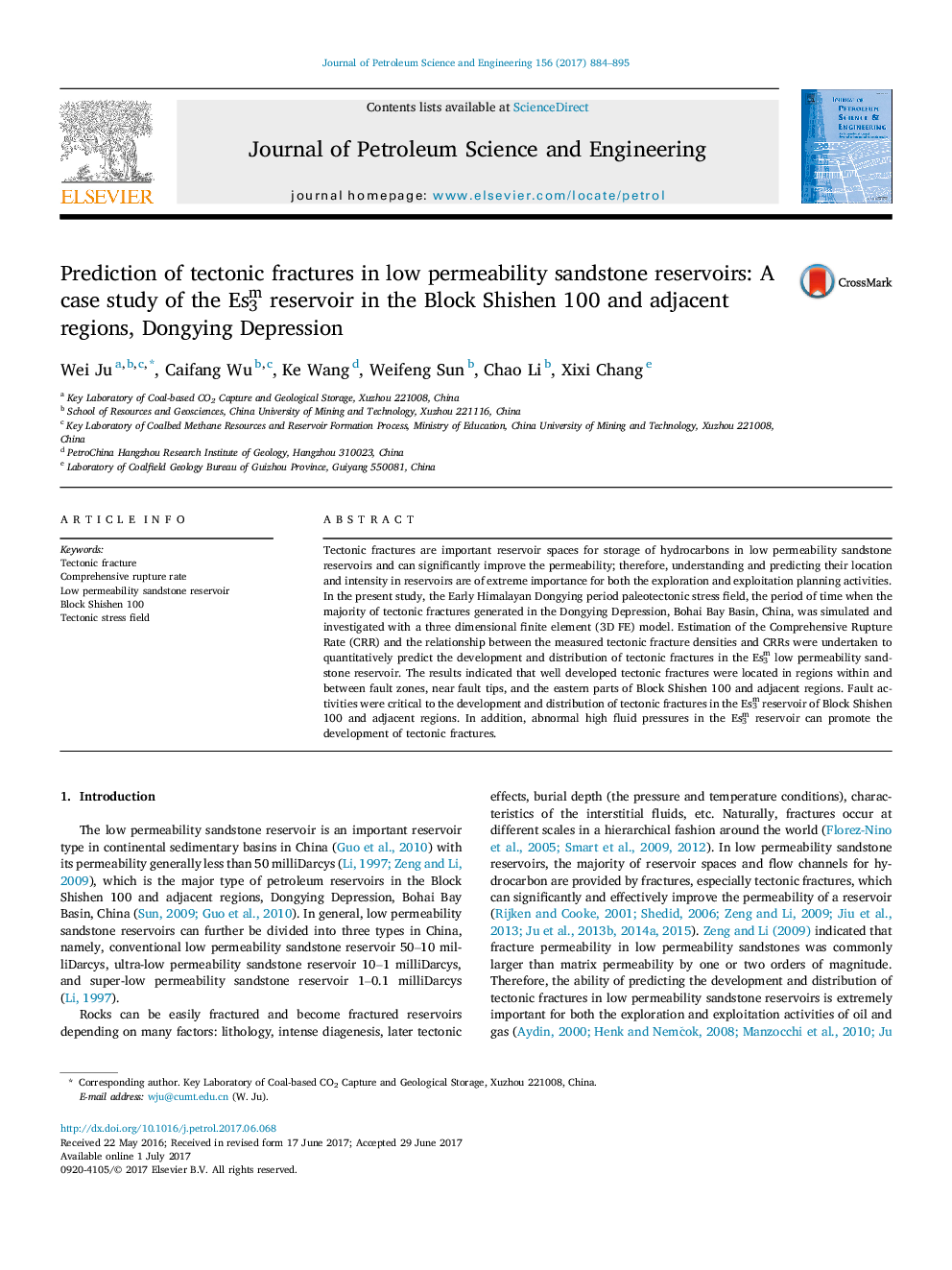| Article ID | Journal | Published Year | Pages | File Type |
|---|---|---|---|---|
| 5484162 | Journal of Petroleum Science and Engineering | 2017 | 12 Pages |
Abstract
Tectonic fractures are important reservoir spaces for storage of hydrocarbons in low permeability sandstone reservoirs and can significantly improve the permeability; therefore, understanding and predicting their location and intensity in reservoirs are of extreme importance for both the exploration and exploitation planning activities. In the present study, the Early Himalayan Dongying period paleotectonic stress field, the period of time when the majority of tectonic fractures generated in the Dongying Depression, Bohai Bay Basin, China, was simulated and investigated with a three dimensional finite element (3D FE) model. Estimation of the Comprehensive Rupture Rate (CRR) and the relationship between the measured tectonic fracture densities and CRRs were undertaken to quantitatively predict the development and distribution of tectonic fractures in the Es3m low permeability sandstone reservoir. The results indicated that well developed tectonic fractures were located in regions within and between fault zones, near fault tips, and the eastern parts of Block Shishen 100 and adjacent regions. Fault activities were critical to the development and distribution of tectonic fractures in the Es3m reservoir of Block Shishen 100 and adjacent regions. In addition, abnormal high fluid pressures in the Es3m reservoir can promote the development of tectonic fractures.
Keywords
Related Topics
Physical Sciences and Engineering
Earth and Planetary Sciences
Economic Geology
Authors
Wei Ju, Caifang Wu, Ke Wang, Weifeng Sun, Chao Li, Xixi Chang,
